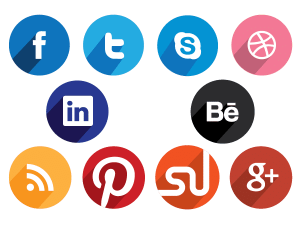Today’s RDH: Leveraging SimpleCert to Achieve Continuing Education Program Success
Today’s RDH: Leveraging SimpleCert to Achieve Continuing Education Program Success
In the world of Dental Continuing Education, you don’t have to search very far before you will find Today’s RDH. Founded in 2018, Today’s RDH is a digital media and education company for Registered Dental Hygienists, dental hygiene students, and other dental professionals. Today’s RDH has become a leader in the dental industry by producing and publishing high-quality articles, videos, podcasts, live events, and online continuing education. For Co-Founder and Chief Operating Officer Ben Buzbee, the gratifying success of Today’s RDH also comes with that business-owner-stress of needing to find ways to scale and grow his company, without being overwhelmed by manual work and lengthy processes.
Given its reach and brand awareness, it was a clear business decision for Ben and the Today’s RDH team to become an approved Continuing Dental Education provider for both the American Dental Association (CERP) and the Academy of General Dentistry (PACE). Today’s RDH currently holds live virtual continuing education events, in addition to a variety of self-study CE courses.
Proactive versus Reactive
It’s a saying we’ve all heard bantered around, and for good reason: being proactive is an essential part of any growing business. For Ben, looking through the entire CE workflow – from the initial coursework and marketing, all the way to distributing individual Certificates of Completion – led him to the realization that he needed a solution to streamline the certification process for potentially tens of thousands of certificates over the course of a year. While searching for possible solutions, Ben discovered SimpleCert. “I looked into over a dozen different solutions and SimpleCert was the only one that met all our requirements for what we were looking for, ” says Ben. “There were a lot of other solutions I looked at before, but none of them met our specific requirements of easy certificate design, easy uploading large lists of people to send the certificates to, and easy emailing & storage options. Every other potential solution I looked at seemed to meet just one of the requirements, not all of them like SimpleCert.”
Building for Future Success, in 5 days or less
Having settled upon SimpleCert as their Certificate Management System, Ben and team turned their attention to onboarding, and setup of their process. Ben estimates that it took less than a week to go from signing up for a test account in SimpleCert, to designing templates and then sending out their first course certificates. Having completed the set up process, Today’s RDH can now reap the benefits of automation, time saving and automatic recordkeeping that SimpleCert provides. “Once attendance has been verified that each attendee met the minimum amount of time to receive a CE certificate, it takes less than an hour to get certificates ready, realistically more like 20 minutes, ” says Ben, for an unlimited number of Attendee Records to be created, and automatically distributed to recipients.
Room to Grow
Automation can bring time savings, and increased efficiency. Increased efficiency and time savings can then be reinvested into other important aspects of your business. With the utilization of SimpleCert, Ben and the Today’s RDH team have been able to focus their energy into scaling Today’s RDH, and continually improving their coursework – without getting buried by manual workflows that are a byproduct of his success. “I can’t even imagine manually creating and emailing over 10, 000 certificates for each event, ” says Ben. “I mean that would probably take months when now it is literally uploading our verified attendee lists and sending the certificates out.”

A true Measure of Success
Oftentimes the true measure of a successful CDE program is not just within the CE Providers’ eyes, but also in the overall experience for the dental professionals who take their coursework. Here too, the Today’s RDH program shines bright. “People really love the [Recipient Portal], where all their certificates are stored in one place, ” says Ben. “Now that we are seeing repeat attendees to our events, it is very useful for them to have all certificates from all events in one place.” Using a professional Certificate Management System like SimpleCert has enabled Today’s RDH to provide a 100% professional experience for their students, throughout their entire Continuing Education program.
A 75% Reduction in Support Response Times
By utilizing SimpleCert, Ben estimates he has reduced the amount of time his team spends on handling support related certificate inquires by a full 75%, compared to the time it would take without the SimpleCert platform. “A lot of the questions revolve around not receiving their CE certificates or not receiving all of them because they waited a few weeks, ” says Ben. “I can then easily lookup their email in SimpleCert to see if all their certificates were sent and then send them to the portal for them to download all of them. Saves a lot of time from having to lookup each course and downloading each individual certificate to send to the person requesting help.”
The Path Forward for Today’s RDH
Looking ahead to the future, Ben is eager to explore ways to further integrate and automate his business processes. “I’m really looking forward to making things a little more white label in terms of integrating directly with our website. I’m a huge fan of using SaaS products whenever possible because I don’t want to be in the software development business, ” says Ben. “I want to focus on our business and what we do best. Paying another company to handle all the intricacies of maintaining software is worth every penny because I don’t have to deal with any of the headaches that come with keeping the software updated and maintained. I just want something that works and I don’t have to think about – SimpleCert is exactly that!”


